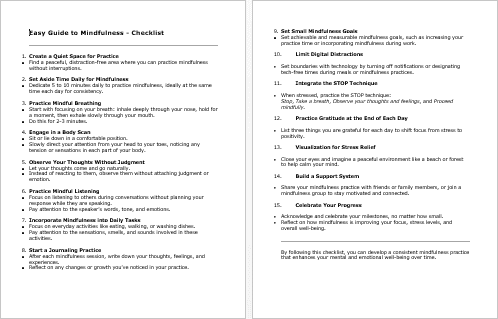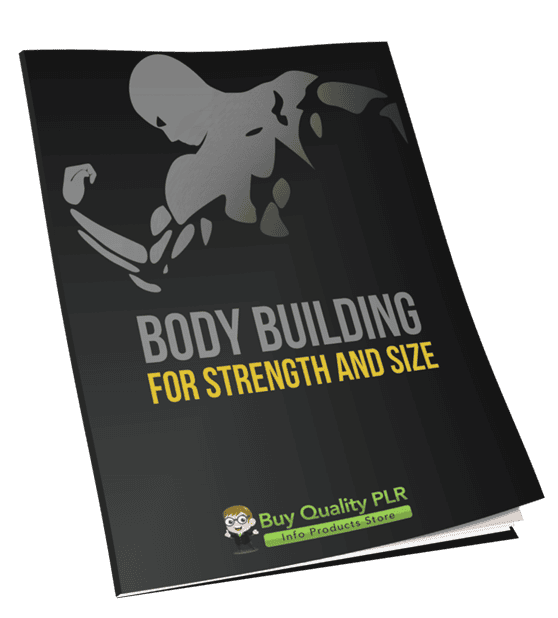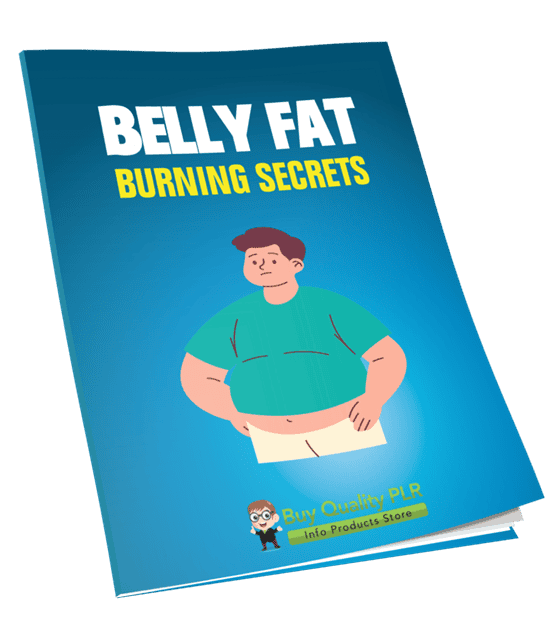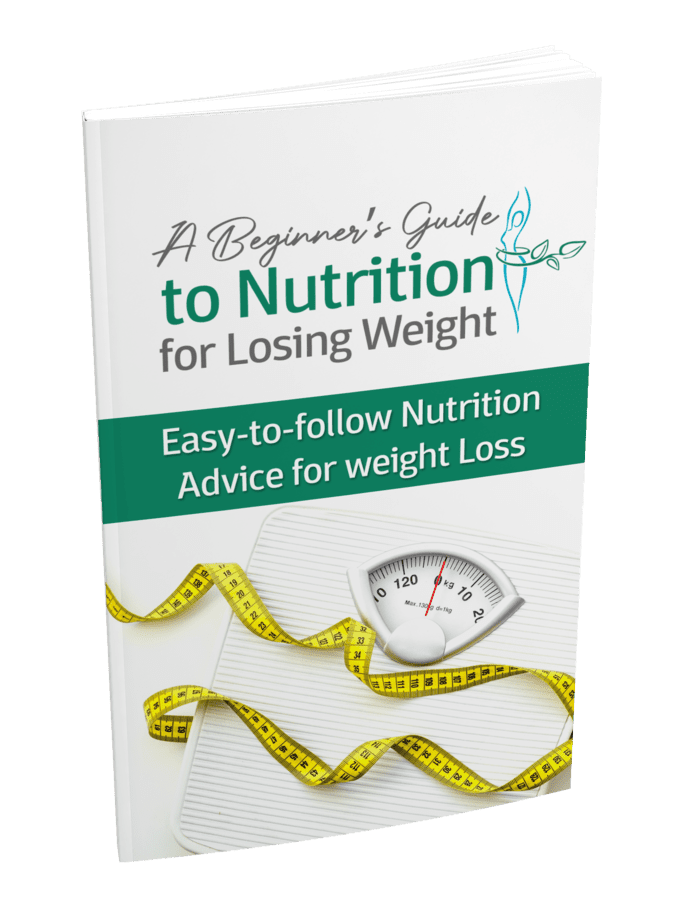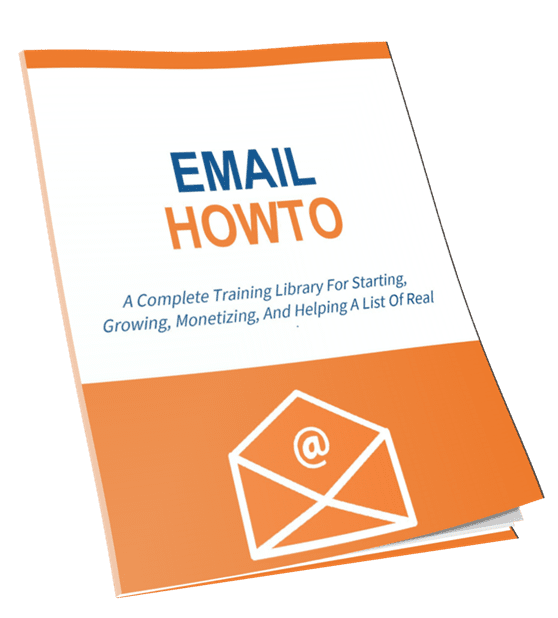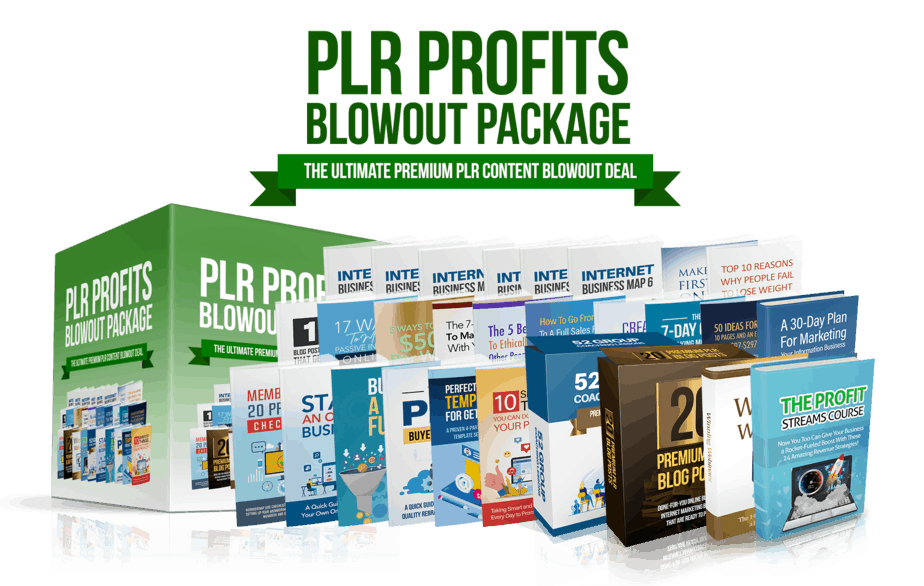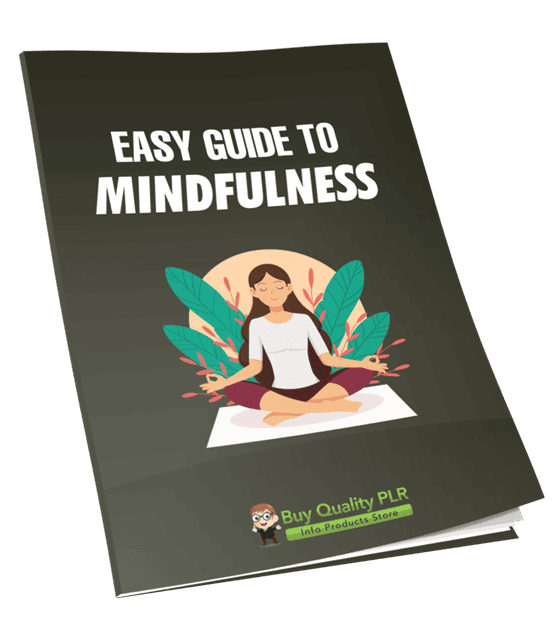
Easy Guide To Mindfulness PLR Course 28k Words
in PLR Checklists , PLR eBooks , PLR eCourses , PLR List Building Reports , Premium PLR , Premium PLR eBooks , Premium PLR Reports , Premium White Label Brandable PLR Coaching Courses , Private Label Rights Products , Self Help PLR , Self Help PLR eBooks , Self Improvement PLR , Self Improvement PLR Ebooks , Wellness PLR , Wellness PLR eBooksChoose Your Desired Option(s)
has been added to your cart!
have been added to your cart!
#mindfulnessplr #mindfulnesscourse #plrcontent #mindfulnesstraining #mentalwellnessplr #mindfulnessguide #personaldevelopmentplr #stressreliefplr #selfawareness #mindfulliving
Easy Guide to Mindfulness PLR Course: Your Path to Inner Peace
Are you ready to reduce stress, improve your focus, and live in the present moment? The Easy Guide to Mindfulness course is designed to help you cultivate mindfulness in your daily life and experience lasting benefits like increased emotional well-being and mental clarity. Whether you’re new to mindfulness or looking to deepen your practice, this course offers practical tools and simple techniques that fit easily into your everyday routine.
Presenting…
Easy Guide To Mindfulness PLR Course 28k Words
Course Overview
Mindfulness is all about being present, aware, and engaged in the moment without judgment. This course is a comprehensive guide that helps you reduce stress, improve your mental health, and bring more balance to your life.
The Easy Guide to Mindfulness PLR Course offers you a simple yet powerful path to mindfulness, packed with actionable steps you can begin implementing today. Through five modules, you’ll explore core mindfulness practices, build effective routines, and learn how to handle life’s challenges with a calm and peaceful mindset.
Course Outline:
Module 1: Understanding Mindfulness
This foundational module introduces you to the core concepts of mindfulness, including what it is, its benefits, and how to apply it in daily life.
- Step 1: What is Mindfulness?
Learn what mindfulness truly is and how it can bring peace to your life.
“Mindfulness is more than just a practice—it’s a way to live, connect, and be present in your life.” - Step 2: The Benefits of Mindfulness
Discover how mindfulness improves your focus, emotional health, and overall well-being.
“Mindfulness is like a reset button for your mind—helping you stay calm, clear, and focused.” - Step 3: Debunking Mindfulness Myths
Get clarity on common misconceptions about mindfulness, so you can embrace its simplicity and power.
“Mindfulness isn’t about perfection—it’s about being present and accepting what is.” - Step 4: Setting Intentions for This Course
Define your personal goals for practicing mindfulness and set your intentions for the journey ahead.
“What do you hope to gain from mindfulness? Let’s focus on that together.”
Module 2: Getting Started with Mindful Practices
This module introduces you to practical exercises and tools to incorporate mindfulness into your daily life.
- Step 1: Breathing Awareness Exercise
Learn to connect with your breath and use it as a tool to center yourself.
“Your breath is your anchor—hold it gently and let it guide you to calmness.” - Step 2: Body Scan Exercise
Connect with your body and release tension through a simple body scan technique.
“Feel every part of your body, listen to its needs, and release any tension.” - Step 3: Mindful Eating
Practice mindful eating to savor every bite and build a healthier relationship with food.
“Eating mindfully brings awareness to the joy of food and promotes better digestion.” - Step 4: Creating a Daily Mindfulness Routine
Build a routine to practice mindfulness every day, even if it’s only for a few minutes.
“Consistency is key to building lasting mindfulness in your life.”
Module 3: Mindfulness in Daily Life
Explore how mindfulness can be woven into the fabric of your everyday activities, from walking to conversations.
- Step 1: Mindful Walking
Practice mindfulness during your walks, focusing on the rhythm of your steps and the environment.
“Every step can be a mindful step toward tranquility.” - Step 2: Mindful Listening
Learn how to listen fully and attentively during conversations, allowing you to be present with others.
“Listen not just with your ears, but with your heart.” - Step 3: Mindfulness at Work
Bring mindfulness to your workday by focusing on one task at a time and taking mindful breaks.
“Mindful productivity leads to more focus and less stress.” - Step 4: Digital Mindfulness
Set boundaries with technology to enhance your ability to stay present in the moment.
“Let’s use technology in ways that support our well-being—not detract from it.”
Module 4: Managing Stress with Mindfulness
Learn to manage stress and challenges with mindfulness, shifting your mindset and responding with calmness.
- Step 1: The STOP Technique
Learn the STOP method to deal with stress: Stop, Take a breath, Observe, Proceed.
“A simple pause can be all it takes to regain control and composure.” - Step 2: Gratitude Practice
Shift your focus from stress to positivity by cultivating a daily gratitude practice.
“Gratitude shifts your perspective and helps you see the beauty in everyday life.” - Step 3: Visualization Exercise
Use visualization techniques to imagine a peaceful place that helps calm your mind.
“Let your mind wander to your serene sanctuary whenever life feels overwhelming.” - Step 4: Self-Compassion
Embrace kindness toward yourself, especially during times of stress or mistakes.
“Treat yourself with the same care and compassion you would offer a friend.”
Module 5: Deepening Your Mindfulness Practice
Go deeper into mindfulness and discover how to maintain your practice and integrate it into your daily life.
- Step 1: Guided Meditation
Start with short guided meditation sessions to deepen your mindfulness practice.
“Guided meditations help you tune into your inner peace, one breath at a time.” - Step 2: Journaling Your Mindfulness Journey
Reflect on your mindfulness practice and track your progress through journaling.
“Writing helps you process and celebrate your mindfulness growth.” - Step 3: Mindful Goal Setting
Set small, achievable goals that will allow you to continuously grow your mindfulness practice.
“Mindfulness is a journey, not a destination. Celebrate your small victories.” - Step 4: Building a Support System
Share your journey with friends or join a mindfulness group to stay motivated.
“A support system can amplify your practice and help you stay committed.”
Bonus Materials
The Easy Guide to Mindfulness PLR Course comes with additional resources to support your journey:
- Mindfulness Checklist (422 words)
A quick reference guide to keep you on track with your daily mindfulness practice. - Mindfulness FAQs (1,190 words)
Answers to common questions about mindfulness, its benefits, and how to overcome obstacles. - Sales Page Template (847 words)
A ready-to-use, professionally written sales page for marketing your mindfulness course.
How to Profit from the Easy Guide to Mindfulness Course
This PLR course offers a variety of ways to generate income:
- Sell the course as-is
Offer the complete course directly on your website or social media, pricing it between $47 and $97. - Break it into smaller reports
Sell the course in bite-sized portions—each module as a separate report priced between $10-$20. - Bundle with other products
Create a bundle of mindfulness-related content, selling it for $97-$197. - Create a membership site
Offer this course as part of a membership site where members pay a monthly fee for continued access to mindfulness content. - Turn it into an eclass
Convert the content into an eclass that you can sell for $297-$497. - Offer it as a premium course
Convert the course into a physical product, or turn it into a video/audio format for higher-priced offerings.
What You Can Do with This Course:
Permissions:
- Sell the content as-is or with minor tweaks.
- Break the content into smaller reports and sell for $10-$20 each.
- Bundle with other mindfulness-related content for $47-$97.
- Create a membership site or offer this course as an ongoing service.
- Convert to audio, video, or membership site content for premium prices.
- Use portions for lead magnets, blog posts, or email courses.
Restrictions:
- You cannot pass on PLR rights to your customers.
- The maximum affiliate commission you can offer is 75%.
- The full course cannot be given away for free in its current state—it must be sold or excerpted/edited for giveaways.
Start Your Mindfulness Journey Today
With the Easy Guide to Mindfulness PLR Course, you’re ready to share the power of mindfulness with your audience. Whether you’re looking to promote your business, build a community, or simply spread the benefits of mindfulness, this course is the perfect tool to get started.
Take action now—guide your audience toward a calmer, more centered life with mindfulness.
has been added to your cart!
have been added to your cart!
Here A Sample of Easy Guide To Mindfulness PLR Course
Welcome to the “Easy Guide to Mindfulness”! This course is designed to help you cultivate mindfulness in your daily life, reduce stress, and live more fully in the present moment. Each module contains simple, practical steps you can follow at your own pace. Let’s get started on this journey to a calmer, more centered you!
Module 1: Understanding Mindfulness
Step 1: What is Mindfulness?
Overview:
Mindfulness is the practice of focusing your attention on the present moment without judgment. It involves an intentional awareness of your thoughts, feelings, and surroundings as they occur, rather than being caught up in the past or worrying about the future. Think of it as pressing a mental “pause” button to step out of the busyness of life and simply “be.”
This step lays the foundation for understanding mindfulness and its importance in today’s fast-paced, globalized world.
Step-by-Step Course Instructions:
1. Defining Mindfulness:
Begin by exploring the core concept of mindfulness. Highlight that it is:
- Non-judgmental: Mindfulness involves observing thoughts and emotions without labeling them as “good” or “bad.”
- Present-focused: The goal is to focus on what is happening right now, not what happened yesterday or what might happen tomorrow.
- Universal: This practice is accessible to everyone, regardless of culture, background, or personal beliefs.
Example Explanation:
“Mindfulness is not about eliminating thoughts or emotions but learning to acknowledge them without attachment or aversion. It’s about developing a kind and curious attitude toward your experiences.”
2. Why Mindfulness Matters:
Introduce the relevance of mindfulness in a global context. Discuss how it addresses common challenges such as stress, burnout, and lack of focus—issues prevalent across cultures and professions.
Example Connection:
“Imagine being able to bring your full attention to a meeting, a creative project, or even a conversation with a loved one. Mindfulness enables you to engage deeply and authentically in the present moment, making you more effective and fulfilled in both personal and professional settings.”
3. Relatable Examples:
Provide scenarios that resonate with an international audience to clarify what mindfulness looks like in action:
- During a commute: Instead of scrolling through your phone, notice the colors, sounds, and movements around you.
- At a meal: Savor the flavors and textures of your food instead of rushing through it while distracted.
- In a stressful moment: Pause, take a deep breath, and notice your thoughts without reacting impulsively.
Example Application:
“Imagine you’re stuck in traffic. Rather than getting frustrated, mindfulness allows you to redirect your focus to your breathing or observe the sky outside. This simple shift can reduce stress and improve your overall experience.”
4. Common Misconceptions About Mindfulness:
Address misunderstandings to clarify what mindfulness is not:
- It’s not about “clearing your mind” or achieving perfect calm.
- It’s not tied to any specific religion or ideology.
- It doesn’t require hours of practice or a special environment.
Example Reframe:
“Many people think mindfulness means having no thoughts at all, but that’s a myth. Mindfulness is about noticing your thoughts and letting them come and go, like watching clouds drift across the sky.”
Practical Exercise for Learners:
Activity:
- Find a quiet spot where you won’t be interrupted for 2 minutes.
- Sit comfortably and close your eyes.
- Bring your attention to your breath as it flows in and out.
- When your mind wanders (and it will!), gently guide it back to your breathing without judgment.
Reflection Prompt:
After the exercise, write down how you felt. Did you notice any distractions? How did it feel to redirect your focus? This activity helps learners experience mindfulness firsthand, making the concept more tangible.
Key Takeaway:
Mindfulness is a simple yet profound practice that involves being fully present in the moment without judgment. It’s not about perfection; it’s about showing up for yourself and your experiences as they are. This foundational understanding sets the stage for deeper exploration in the modules ahead.
Step 2: The Benefits of Mindfulness
Overview:
Mindfulness is more than a relaxation technique; it is a life skill that enhances mental clarity, emotional resilience, and physical well-being. In this step, we will explore the wide-ranging benefits of mindfulness and its transformative potential in both personal and professional contexts. These benefits are universal, making mindfulness relevant and valuable for individuals across diverse cultures, professions, and lifestyles.
By understanding these benefits, learners will see why mindfulness is a skill worth developing and integrating into daily life.
Step-by-Step Course Instructions:
1. Enhanced Focus and Concentration
Mindfulness sharpens your ability to focus on tasks and people, improving productivity and fostering meaningful connections. When you practice mindfulness, you train your brain to pay attention to the present moment rather than being distracted by unnecessary thoughts or multitasking.
Example in Action:
“Picture yourself in a busy workplace, juggling emails, meetings, and deadlines. Instead of feeling overwhelmed, mindfulness helps you prioritize and focus on one task at a time, allowing you to work more efficiently and with greater satisfaction.”
Practical Tip:
Practice mindful breathing for 1-2 minutes before starting a task. This clears mental clutter and prepares your mind to concentrate.
2. Stress Reduction and Emotional Resilience
Mindfulness helps regulate your body’s stress response. By observing your thoughts and feelings without judgment, you can break the cycle of stress and prevent it from escalating. Mindfulness also teaches emotional regulation, allowing you to respond thoughtfully rather than reacting impulsively.
Example in Action:
“Imagine facing a disagreement during a meeting. Instead of reacting defensively, mindfulness helps you pause, recognize your emotions, and respond calmly, fostering a more constructive conversation.”
Practical Tip:
Use the STOP technique in moments of stress:
- Stop what you’re doing.
- Take a deep breath.
- Observe your emotions and thoughts.
- Proceed mindfully.
3. Boosted Emotional Well-being
Practicing mindfulness enhances your overall sense of well-being by cultivating positive emotions such as gratitude, compassion, and joy. It shifts your focus from dwelling on negatives to appreciating the present.
Example in Action:
“Consider how you feel after a hectic day. Instead of replaying stressful moments, mindfulness encourages you to reflect on what went well—no matter how small—and savor those positive experiences.”
Practical Tip:
End your day with a 3-minute gratitude practice. Write down three things you are grateful for, such as a meaningful conversation, a pleasant meal, or a moment of laughter.
4. Improved Physical Health
Mindfulness can positively impact physical health by lowering blood pressure, improving sleep quality, and reducing symptoms of anxiety and depression. It also strengthens your immune system, helping you stay healthy and resilient.
Example in Action:
“Imagine waking up after a restful night’s sleep, feeling refreshed and ready to tackle the day. Mindfulness practices, such as guided meditations before bed, help improve the quality of your rest, setting the tone for better health and productivity.”
Practical Tip:
Incorporate a short body scan meditation before bed to release tension and prepare your body for restful sleep.
Interactive Activity for Learners:
Reflection Exercise:
Ask learners to take a moment and think about a recent stressful or challenging situation. Provide these prompts for reflection:
- How did you respond to the situation?
- Could mindfulness have helped you approach it differently?
- What benefits of mindfulness would have been most helpful in that moment?
Encourage learners to share their reflections in a discussion forum or journal privately for personal insights.
Key Takeaways:
- Enhanced Focus: Mindfulness strengthens your ability to concentrate and prioritize effectively.
- Stress Management: It reduces stress by helping you respond thoughtfully instead of reacting impulsively.
- Emotional Growth: Mindfulness fosters gratitude, joy, and resilience, contributing to emotional well-being.
- Physical Health Benefits: Mindfulness improves sleep, lowers stress-induced health issues, and boosts overall wellness.
Through these benefits, mindfulness equips you to navigate life’s challenges with calmness, clarity, and confidence. These transformative effects make mindfulness a powerful tool for people worldwide.
Step 3: Debunking Mindfulness Myths
Overview:
Mindfulness is often misunderstood due to misconceptions and stereotypes. In this step, we’ll clarify common myths and reveal the truth behind them. Mindfulness is a practical, accessible practice that can be integrated into daily life, regardless of your background or experience level. This step will show that you don’t need to be a monk or spend hours meditating to experience the transformative benefits of mindfulness. It is for everyone, and it can start with small, manageable steps.
By dispelling these myths, learners will feel more empowered to embrace mindfulness in a way that works for them.
Step-by-Step Course Instructions:
1. Myth: You Have to Meditate for Hours to Practice Mindfulness
Many people believe that mindfulness requires long, formal meditation sessions. While meditation is one way to practice mindfulness, it is not the only way, nor does it require hours of commitment. In fact, mindfulness can be practiced in as little as 1-2 minutes throughout your day.
Example in Action:
“Imagine you’re in a meeting, and your mind begins to wander. Instead of letting distractions take over, take a moment to focus on your breathing for a minute or two. This quick mindfulness practice helps you refocus without needing to set aside a long period of time.”
Clarification:
Mindfulness is about bringing your attention to the present moment—whether it’s during a walk, eating, or even washing the dishes. You don’t need hours of meditation to benefit from mindfulness. Even small moments of awareness can bring positive results.
2. Myth: Mindfulness is Only for Stressful or Negative Situations
Some believe that mindfulness is only useful when you’re stressed, anxious, or feeling negative emotions. In reality, mindfulness is beneficial at any time, not just during difficult moments. It helps you enhance positive experiences, improve focus, and deepen your connection to your surroundings.
Example in Action:
“Think about a time when you were enjoying a beautiful sunset or a joyful conversation. Practicing mindfulness in these moments allows you to savor and fully appreciate the present. Mindfulness helps you amplify positive emotions as well as manage challenging ones.”
Clarification:
Mindfulness is not a tool for “fixing” problems; it’s a practice for living more consciously. Whether you’re feeling stressed or joyful, mindfulness helps you engage with your experience fully, without judgment.
3. Myth: Mindfulness Requires Special Skills or Training
A common myth is that mindfulness is something only “special” people can do. Some might think it’s reserved for monks, yoga practitioners, or spiritual seekers. However, mindfulness is a universal practice that anyone can adopt, regardless of their background, profession, or level of experience.
Example in Action:
“Think of a busy office worker, a stay-at-home parent, or a university student—all of them can practice mindfulness. Whether you’re listening to a colleague, walking to work, or even cleaning your home, mindfulness is simply about paying attention with awareness, not with a special skill set.”
Clarification:
Mindfulness does not require any special abilities or profound insights. It is a natural human skill that everyone can cultivate through practice. It’s about noticing what is happening right now, without needing to alter your environment or lifestyle.
4. Myth: Mindfulness is About Clearing Your Mind Completely
Many people think mindfulness means “emptying” the mind or having no thoughts. The truth is, the mind is always active. Mindfulness is not about clearing your mind of thoughts but about observing those thoughts non-judgmentally and allowing them to pass without becoming attached to them.
Example in Action:
“Imagine you’re practicing mindfulness and thoughts about your to-do list pop into your head. Instead of fighting or suppressing those thoughts, mindfulness helps you acknowledge them and return your focus to your breath or surroundings without getting caught up in them.”
Clarification:
Mindfulness is about awareness of your thoughts, not eliminating them. It’s about noticing what’s happening in the present moment, including your thoughts, emotions, and sensations, and accepting them as they are.
5. Myth: Mindfulness is Only About Meditation or Sitting Still
While meditation is a popular form of mindfulness, many people assume mindfulness only happens when you’re sitting in a quiet place meditating. However, mindfulness can be practiced anywhere—while walking, eating, talking, or even during routine activities like driving or cleaning.
Example in Action:
“Take a moment to practice mindful walking. Instead of rushing to your destination, slow down and pay attention to how your feet feel as they touch the ground, the air around you, or the sights and sounds of your environment.”
Clarification:
Mindfulness is about being fully present wherever you are, not just during formal meditation. You can integrate mindfulness into any part of your day, from the morning commute to household chores, as long as you remain aware of the present moment.
Practical Exercise for Learners:
Activity:
Encourage learners to reflect on the myths that may have held them back from practicing mindfulness and explore the following:
- Which myth did you believe before starting this course?
- How does this myth limit your ability to engage with mindfulness?
- How can you begin to practice mindfulness in small, manageable ways today?
Encourage learners to share their insights in a group discussion or journal privately. This allows them to engage critically with the myths and embrace a more practical, accessible understanding of mindfulness.
Key Takeaways:
- Myth: You need to meditate for hours.
Truth: Mindfulness can be practiced in short bursts throughout the day—no long sessions required. - Myth: Mindfulness is only for stressful situations.
Truth: Mindfulness is valuable in both challenging and positive moments. It helps you engage fully with any experience. - Myth: Mindfulness requires special skills or training.
Truth: Anyone can practice mindfulness—it’s a natural human ability that can be cultivated through awareness and practice. - Myth: Mindfulness is about clearing your mind completely.
Truth: Mindfulness is about noticing thoughts without getting attached to them or judging them. - Myth: Mindfulness only happens during meditation.
Truth: Mindfulness can be practiced during any activity, from walking to eating to conversing with others.
By debunking these myths, learners will feel more confident and empowered to incorporate mindfulness into their daily lives, no matter their experience level or background. Mindfulness is a versatile and accessible practice for everyone.
Step 4: Setting Intentions for This Course
Overview:
Setting intentions is a powerful practice that helps guide your learning and keeps you focused on your goals. Before diving deeper into mindfulness, it’s important to take a moment to reflect on why you want to learn and practice mindfulness. This step will help you clarify your motivations, set meaningful goals, and establish a clear purpose for this course. When you are clear on your “why,” the journey ahead becomes more focused and meaningful.
In this step, we will guide you through the process of setting your intentions for the course. This will serve as a reminder of your motivation throughout the course and beyond, helping you stay grounded in your learning process and empowered to apply mindfulness to your daily life.
Step-by-Step Course Instructions:
1. Reflect on Your Motivation
Before you begin the mindfulness journey, it’s essential to reflect on your reasons for wanting to learn mindfulness. Ask yourself:
- What made you choose this course?
- Are you looking for stress relief, better emotional regulation, improved focus, or a deeper sense of peace?
- How do you envision mindfulness helping you in your personal or professional life?
Example in Action:
“Let’s say you’ve been feeling overwhelmed with the demands of work and life, and you’re hoping mindfulness will help you stay calm and present. Your motivation could be to manage stress more effectively and approach your daily tasks with greater clarity and focus.”
Clarification:
Your motivation may evolve as you progress through the course, but starting with a clear intention gives you a sense of purpose. Whether you are seeking better emotional regulation, stress management, or simply an enhanced sense of well-being, identifying these goals will guide your learning journey.
2. Write Down Your Intentions
Once you’ve reflected on your motivation, it’s important to write down your intentions. Writing reinforces your commitment and helps you visualize your success. Take some time to jot down your goals in a journal or a notebook, and remember that your intentions can be both short-term and long-term.
Example in Action:
“I intend to practice mindfulness for 10 minutes every day to reduce my stress and feel more present in my daily tasks. I want to learn how to handle challenges at work with a calm, focused mindset.”
Clarification:
By writing down your intentions, you create a tangible reminder of your purpose. Having your intentions visible to you throughout the course will motivate you to stay engaged and committed. Your intentions should feel authentic, achievable, and connected to your personal or professional life.
3. Break Down Your Intentions into Actionable Steps
Now that you’ve written down your intentions, break them down into smaller, actionable steps. These steps will help you gradually incorporate mindfulness into your life and make it easier to track your progress.
Example in Action:
If your intention is to reduce stress through mindfulness, an actionable step could be:
- “I will practice mindful breathing for 5 minutes before every meeting.”
- “I will pause to take a deep breath whenever I feel overwhelmed at work.”
Clarification:
By turning your intentions into actionable steps, you move from abstract goals to concrete practices. This makes it easier to integrate mindfulness into your routine and gives you a sense of accomplishment as you check off each step.
4. Revisit Your Intentions Regularly
Mindfulness is a lifelong practice, and as you progress, your intentions may shift or evolve. Regularly revisiting and refining your intentions helps you stay aligned with your goals. Set a reminder to reflect on your intentions at the beginning of each week or at regular intervals throughout the course.
Example in Action:
“At the start of each week, take a moment to review your intentions. Are there new mindfulness practices you’d like to try? Do you feel more present and less stressed in your work life? If your intentions have shifted, adjust your plan to align with your new goals.”
Clarification:
Revisiting your intentions helps you stay connected to the reasons why you started this course. It also gives you an opportunity to track your progress and adapt your practice as your needs change. Mindfulness is not a static goal but a journey, and your intentions will continue to evolve over time.
Interactive Activity for Learners:
Activity:
Take 5-10 minutes to sit in a quiet place where you can reflect without distractions. Follow these prompts to guide your writing:
- What are the main reasons you decided to learn mindfulness?
- How do you think mindfulness will help you in your personal or professional life?
- What specific changes would you like to see in your life as a result of practicing mindfulness?
- Break down your larger goals into small, achievable steps.
- Write your intentions in a journal or notebook and keep it as a reference throughout the course.
Once you’ve written down your intentions, consider sharing them with a course peer or in a discussion group. This accountability can help you stay focused and motivated.
Key Takeaways:
- Clarity of Motivation: Reflecting on your motivations helps you stay focused on your “why” throughout the course.
- Written Intentions: Writing down your intentions makes them tangible and reinforces your commitment.
- Actionable Steps: Breaking your goals into small, manageable steps makes mindfulness practices more achievable.
- Regular Reflection: Revisiting your intentions throughout the course allows you to track progress and adjust your approach.
By setting clear, actionable intentions at the beginning of this course, you create a strong foundation for your mindfulness practice. These intentions will serve as your guiding compass, keeping you focused, motivated, and on track throughout your learning journey. Whether you’re learning mindfulness for personal growth, professional success, or emotional well-being, a well-defined intention will help you stay connected to your purpose and make the most of this course.
We’re also giving these extra bonuses
Easy Guide To Mindfulness – Checklist
Easy Guide To Mindfulness – FAQs

Easy Guide To Mindfulness – Salespage Content

Package Details:
Word Count: 26 068 Words
Number of Pages: 97
Easy Guide To Mindfulness – Bonus Content
Checklist
Word Count: 422 words
FAQs
Word Count: 1190 words
Salespage Content
Word Count: 847 words
Total Word Count: 28 527 Words
Your PLR License Terms
PERMISSIONS: What Can You Do With These Materials?
Sell the content basically as it is (with some minor tweaks to make it “yours”).
If you are going to claim copyright to anything created with this content, then you must substantially change at 75% of the content to distinguish yourself from other licensees.
Break up the content into small portions to sell as individual reports for $10-$20 each.
Bundle the content with other existing content to create larger products for $47-$97 each.
Setup your own membership site with the content and generate monthly residual payments!
Take the content and convert it into a multiple-week “eclass” that you charge $297-$497 to access!
Use the content to create a “physical” product that you sell for premium prices!
Convert it to audios, videos, membership site content and more.
Excerpt and / or edit portions of the content to give away for free as blog posts, reports, etc. to use as lead magnets, incentives and more!
Create your own original product from it, set it up at a site and “flip” the site for megabucks!
RESTRICTIONS: What Can’t You Do With These Materials?
To protect the value of these products, you may not pass on the rights to your customers. This means that your customers may not have PLR rights or reprint / resell rights passed on to them.
You may not pass on any kind of licensing (PLR, reprint / resell, etc.) to ANY offer created from ANY PORTION OF this content that would allow additional people to sell or give away any portion of the content contained in this package.
You may not offer 100% commission to affiliates selling your version / copy of this product. The maximum affiliate commission you may pay out for offers created that include parts of this content is 75%.
You are not permitted to give the complete materials away in their current state for free – they must be sold. They must be excerpted and / or edited to be given away, unless otherwise noted. Example: You ARE permitted to excerpt portions of content for blog posts, lead magnets, etc.
You may not add this content to any part of an existing customer order that would not require them to make an additional purchase. (IE You cannot add it to a package, membership site, etc. that customers have ALREADY paid for.)
Share Now!

